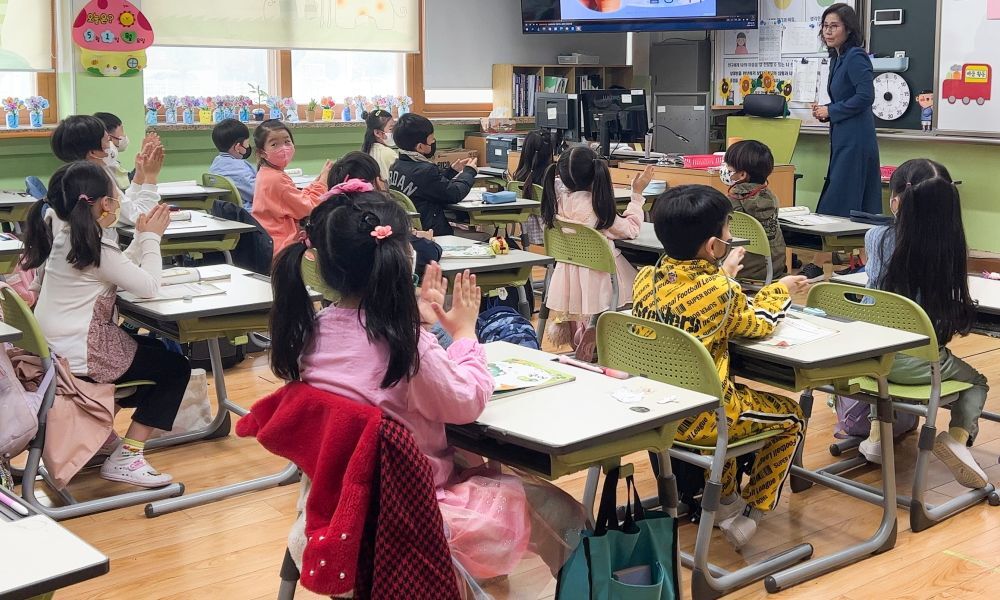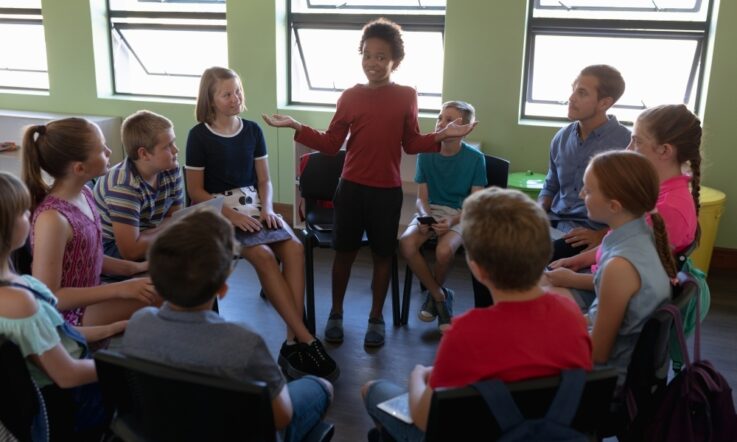Our latest Teacher’s Bookshelf features Building a World-Class Learning System: Insights from some top-performing school systems, by Professor Geoff Masters. In this new publication commissioned by the US National Center on Education and the Economy (NCEE) Professor Masters – Chief Executive Officer of the Australian Council for Educational Research (ACER) – focuses on learning systems in 5 jurisdictions that have long performed well on the OECD’s Programme for International Student Assessment (PISA).
The result of a multi-year study, in the book Professor Masters explores what the education systems in British Columbia, Estonia, Finland, Hong Kong and South Korea have in common, the strategies they employ, and the decisions they are making to support students now and in the future. This excerpt is taken from Chapter 7, on ‘Comprehensive Student Support’.
Meeting every learner’s needs
An objective in these jurisdictions has been to see each student as an individual with a particular set of learning needs. Increasingly, efforts are being made to address individuals’ needs with minimal categorizing and labelling of students. Instead, the focus has been on clarifying and describing the forms of support available to students, and the processes for deciding the level of support an individual requires and how it will be provided. In some jurisdictions, this is reflected in the concept of a continuum of supports divided into tiers.
One consequence of this approach has been a declining tendency to identify a percentage of students as having ‘special’ needs. Each student is considered unique and to have unique needs. For example, Estonia’s Basic Schools and Upper Secondary Schools Act defines special needs as needs requiring any adjustment to subject matter, teaching and learning processes, duration of teaching and learning, student workload, or learning environment. Such needs may be the result of issues such as long-term absence, health issues, behaviour, language background, immigrant status, and diagnosed learning difficulties. Students who are more advanced in their learning are also recognized as having special needs. Schools and teachers are expected to identify when and how teaching should be adapted and/or additional support should be provided to individual learners.
Finland also uses the term ‘special education’ to apply to a broad range of learning supports. Special education teachers work with students who require additional support. This may involve co-teaching in regular classrooms or providing additional teaching to individuals or small groups. Almost a quarter of Finnish students receive ‘special’ support of this kind each year, and almost half receive such support during their schooling. It also involves the full-time teaching of small classes of up to 10 students who require more intensive support. Teachers providing both forms of support are referred to as special education teachers and receive the same training.
A second consequence of efforts to minimize the categorization and labelling of students has been the inclusion of almost all students in mainstream schools and classes, accompanied by additional resources and professional support to enable this. There has been growth in the number of schools with school psychologists, social workers, speech therapists, and nurses. In some jurisdictions, the number of schools catering only for students requiring high levels of support has been reduced as more of these students have been mainstreamed.
However, some schools continue to cater for students requiring high-level support. For example, Finland has 12 separate schools for students with severely delayed development, severe handicaps, autism, dysphasia, and visual or hearing impairment (about 1% of the student population). Similarly, about 1% of Korean students attend separate schools providing intensive support. Korean students with mild to moderate needs are enrolled in mainstream schools, sometimes in separate classes (the number of special classrooms within mainstream schools has increased by more than 40% since 2007). And slightly more than 1% of students in Hong Kong are in special schools.
A third consequence has been the development of more systematic approaches to identifying and describing the supports available to students and for deciding the level of support an individual requires. Hong Kong and Finland have both developed three-tier models for doing this. Finland’s model was introduced as part of a major reform in 2010 that saw the majority of students with learning or behavioural difficulties –who had previously been in special classes – incorporated into regular classes. Tier 1 support occurs in regular classrooms in the form of differentiated teaching, flexible groupings of students, remedial instruction, and co-teaching of individuals or small groups. If this level of support is inadequate, then in consultation with parents and the student, Tier 2 support is provided in the form of intensified individual support. If this second level of support is inadequate, a multi-professional team undertakes an evaluation leading to an official decision to commence an individual education plan. In Tier 3, students can continue in their regular classes or be placed part time or full time in small groups. Supports are similar to supports at the lower levels, but with increased intensity.
In Hong Kong’s model, Tier 1 involves addressing learning difficulties through quality teaching in regular classrooms. Tier 2 provides interventions for students with persistent learning difficulties through small group teaching and pull-out programs. And Tier 3 involves the development of an individual education plan and intensive individualized support. Schools have Special Educational Needs Coordinators (SENCOs) to lead the school’s student support team. The Education Bureau also operates two Special Education Services Centers that provide resources and online training for teachers in implementing the three-tier model.
The early identification of individuals’ needs and adaptations of the common curriculum to cater for those needs are key elements of these jurisdictions’ approaches. For example, Hong Kong has an early identification and intervention of learning difficulties program for first grade children to ensure the early identification of needs. Through this program, teachers observe children for the first few months and then administer an observation checklist. And Estonia provides a simplified national curriculum for students with mild, moderate, and profound learning difficulties.
Building a World-Class Learning System: Insights from some top-performing school systems is available as a free download on the NCEE website.
How do you identify individual learner’s needs in your own school context? What strategies do you employ to address these needs? Do you monitor and evaluate the effectiveness of these strategies?



